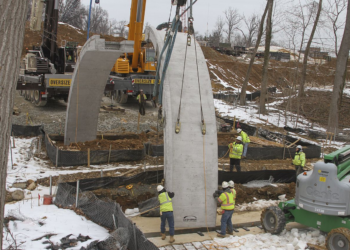Pope Francis’ sudden death has put the focus back on a 900-year-old prophetic book.
The 12th-century ‘Prophecy of the Popes’ found in the Vatican’s secret archives that claims to predict who will replace the late pope – and the return of Christ.
It contains a series of cryptic Latin phrases believed to describe every pope, beginning with Celestine II in 1143 and concluding with ‘Peter the Roman’ in 2027.
Fanning the flames is the fact there are currently nine frontrunners to succeed Pope Francis — and three have the name Peter.
The renewed interest in the prophecy has also raised concerns about the text’s other prediction: that Judgment Day is quickly approaching.
Many Christians believe this ominous date of marks when Jesus returns to Earth to determine who will be saved and who will be damned, and a saint said it would happen in 2027 – less than two years from now.
Francis, who was dealing with respiratory issues for months, died Monday of a suspected cerebral hemorrhage – a stroke caused by bleeding in the brain – at the age of 88.
Following a nine-day period of mourning, the Catholic Church will begin the process of determining Francis’ replacement, summoning all of the cardinals around the world to Rome.
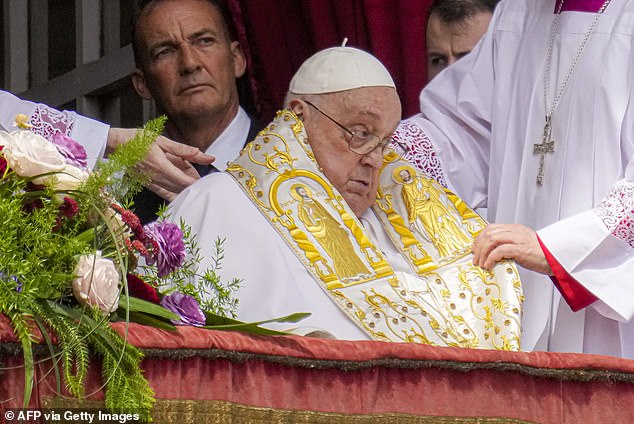
Francis (pictured on Easter Sunday) died due to a ‘cerebral hemorrhage’, possibly a stroke, which is said to be unrelated to the respiratory problems and pneumonia he suffered in February, outlets La Repubblica and La Stampa claim
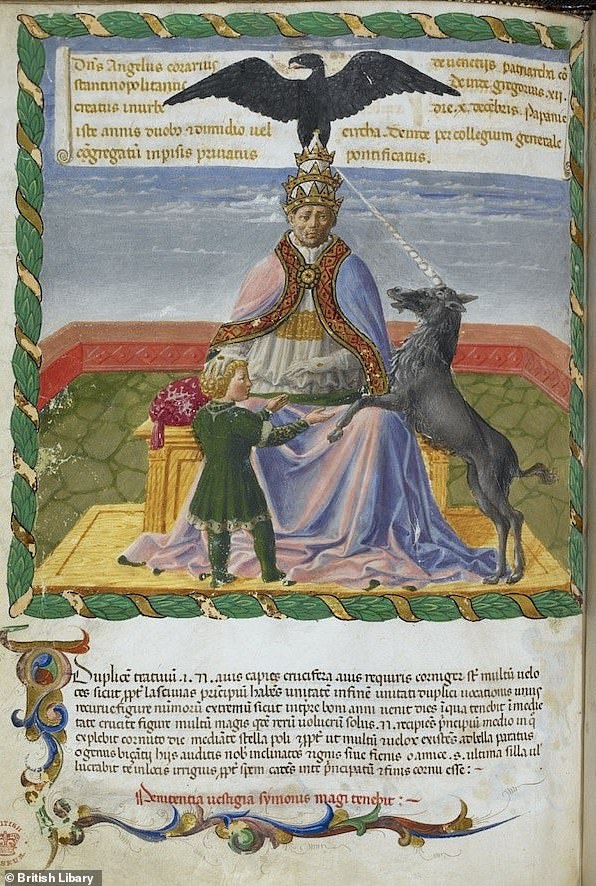
Prophecy of the Popes includes 112 cryptic phrases which are said to describe each of the future popes, starting in 1143
The selection process known as the papal conclave must start between 15 and 20 days after Francis’ death.
Only cardinals under the age of 80 are eligible to vote, and a two-thirds majority is required to elect a new pope.
Saint Malachy is credited with creating the Prophecy of the Popes, which features 112 short, cryptic phrases that allegedly describe each future pope until Judgment Day.
According to the final entry surrounding Peter the Roman, the ‘last pope’ will preside over the Church during a time of great turmoil, culminating in the destruction of Rome and the end of the papacy.
‘In the final persecution of the Holy Roman Church there will reign Peter the Roman, who will feed his flock amid many tribulations, after which the seven-hilled city will be destroyed and the dreadful Judge will judge the people. The End,’ the last passage of the book reads.
While some incorrectly interpreted the prophecy as ‘Peter the Roman’ taking over for Pope Francis during his recent hospitalizations, others believed Malachy was suggesting Francis himself would be the last pontiff.
Over the years, biblical scholars have focused on the timeline surrounding these future popes and when they would lead the Catholic Church.
Some believe the text proclaimed that it had reached its halfway point in 1585, after the first 442 years of predictions. This would make the final year of Malachy’s prophecy 2027.
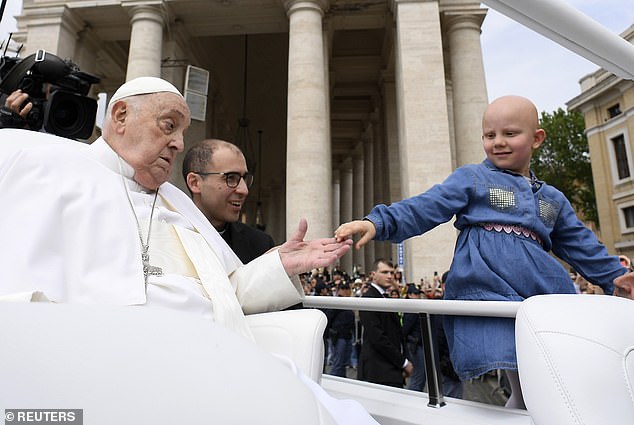
Pope Francis greeted a little girl during the Easter Mass in St. Peter’s Square Sunday, a day before his death was announced by the Vatican
Although some scholars have claimed the text is a 16th century forgery, Malachy allegedly wrote Prophecy of the Popes in 1139 after receiving a vision during a visit to Rome.
The claims that someone else wrote the 112 phrases about each future pope stem from the specific and highly accurate way each of the popes are described up until 1590.
After that point, the phrasing becomes much more vague and leave a lot open to interpretation. However, there are still some shockingly accurate phrases that can be found in modern times.
One of the prophecies names the 111th pope as being ‘the glory of the Olive,’ once translated into English.
Some historians believes this shows Malachy accurately predicted Pope Benedict would lead the Catholic Church since came from a religious order known as the Olivetans. He was pope from 2005 to 2013.
Another line of text reads, ‘of the eclipse of the sun,’ which has been speculated to signal the coming of Pope John Paul II (Karol Wojtyla) who was born during a solar eclipse. He was pope from 1978 until 2005.

The ancient text only mentions one other pope after ‘Gloria Olivae,’ whom scholars claim was referring to Pope Benedict XVI
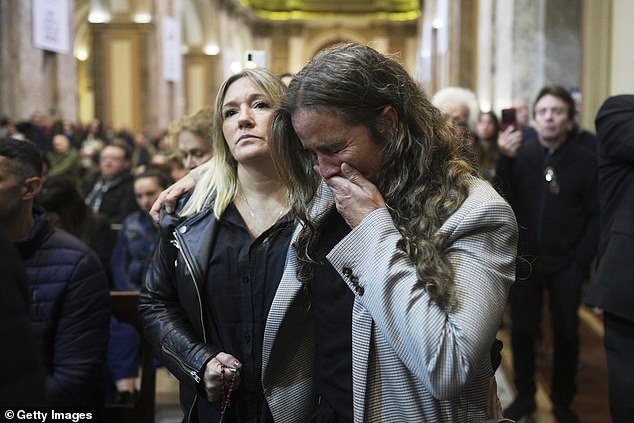
A worshipper cries during Mass at the Cathedral in Buenos Aires, Argentina, following the Vatican’s announcement of Pope Francis’ death on Easter Monday
Among the many frontrunners to replace Francis are three cardinals who each have the name Peter, including Peter Erdő of Hungary, the leading conservative candidate; Peter Turkson of Ghana, a prominent figure in the church’s social justice circles; and Pietro Parolin of Italy, one of the most experienced Vatican officials.
Before his death, some tried to connect Francis to the prophecy of Peter the Roman, noting his Italian heritage and the fact that his birth name was Giovanni di Pietro di Bernardone.
The saint’s predictions were taken seriously in the last few decades.
As one report states: ‘In 1958, before the Conclave that would elect Pope John XXIII, Cardinal Spellman of New York hired a boat, filled it with sheep and sailed up and down the Tiber River, to show that he was ‘pastor et nautor,’ the motto attributed to the next Pope in the prophecies.’
While the book was found more than 400 years ago, its prophecy recently resurfaced when Francis suffered two episodes of respiratory crisis in February.
As for Judgment Day, speculation regarding its impending arrival has intensified over the last year as Francis’ health faded.
A documentary released in 2024 focused on a passage attributed to Pope Sixtus V from 1585 that reads: ‘Axle in the midst of a sign’ – supposedly marking the halfway point of Malachy’s prophecy.
Pope Sixtus V led the church 442 years after the first leader mentioned by Malachy and with the text suggesting he is the middle of the prophecy.
The end of the world would therefore come 442 years later in 2027, just 20 months after Francis’ death.







